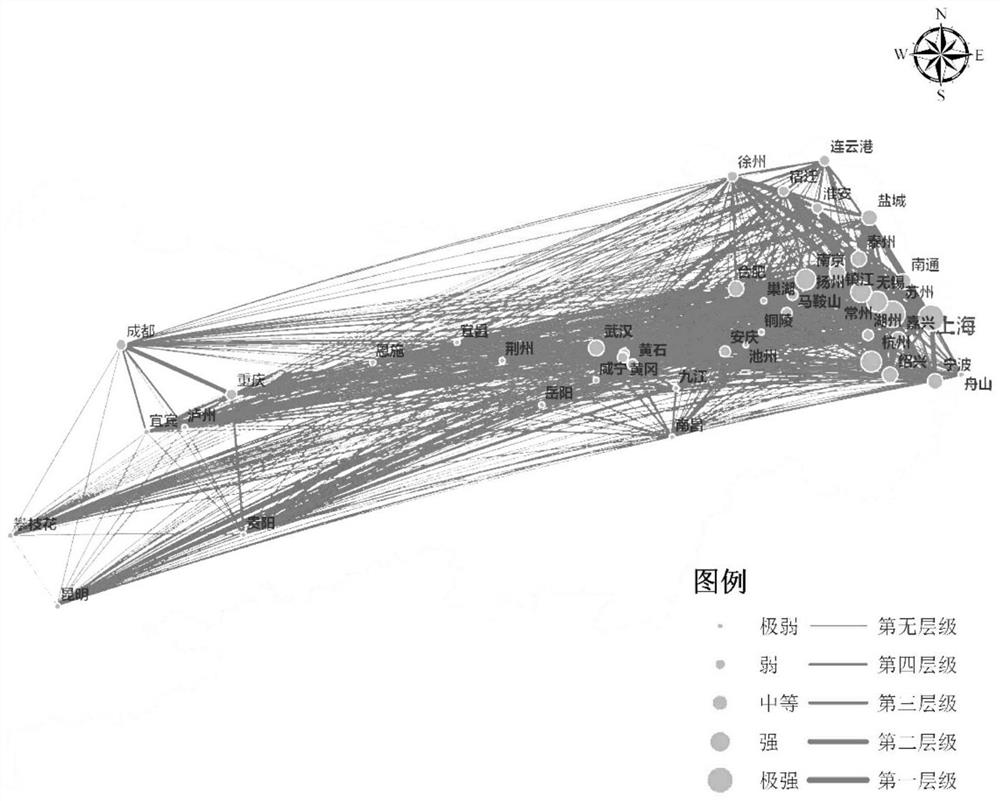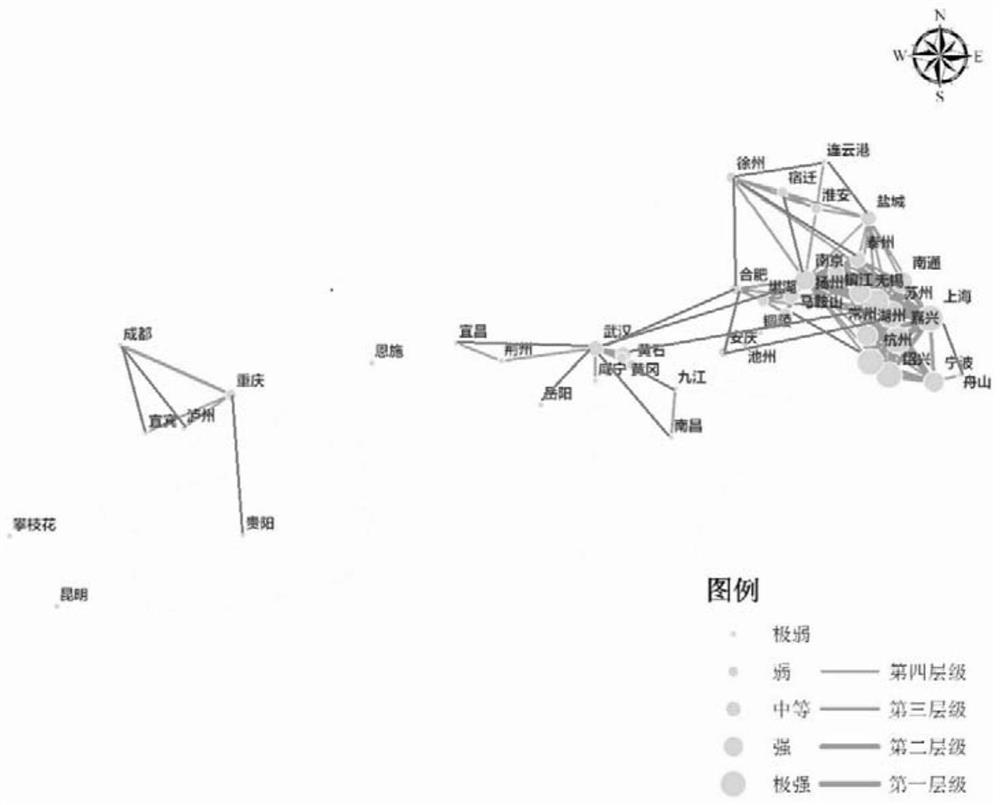Urban network comprehensive analysis method and system based on multi-source element flow
An analysis method and network synthesis technology, applied in the field of urban network comprehensive analysis based on multi-source element flow, can solve the problems of universality and multi-source data fusion, insufficiency, etc., to improve flow analysis efficiency, easy operation, and application scope. wide range of effects
- Summary
- Abstract
- Description
- Claims
- Application Information
AI Technical Summary
Problems solved by technology
Method used
Image
Examples
Embodiment Construction
[0056] The present invention proposes a method with strong universality, fusion of multi-source data, and multi-model comprehensive analysis, which divides urban element flows such as people flow, goods flow, information flow, financial flow, and economic flow into socio-economic flow, financial flow, etc. For the three types of information flow and traffic flow, calculation modules are designed for the three types of element flows, which can realize the functions of separate calculation of the three types of element flows, comprehensive analysis of urban element flows, visualization of element flow connections, and element flow network analysis. Simple and easy-to-use smart city flow analysis software platform.
[0057] Specifically, the present invention divides various element flows in planning into three categories: people flow, goods flow, and capital flow belong to traffic flow; economic and social development element flow belongs to social economic flow; enterprise flow ...
PUM
 Login to View More
Login to View More Abstract
Description
Claims
Application Information
 Login to View More
Login to View More - R&D
- Intellectual Property
- Life Sciences
- Materials
- Tech Scout
- Unparalleled Data Quality
- Higher Quality Content
- 60% Fewer Hallucinations
Browse by: Latest US Patents, China's latest patents, Technical Efficacy Thesaurus, Application Domain, Technology Topic, Popular Technical Reports.
© 2025 PatSnap. All rights reserved.Legal|Privacy policy|Modern Slavery Act Transparency Statement|Sitemap|About US| Contact US: help@patsnap.com



